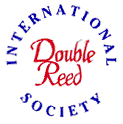

|
|
Scores and Parts Created from the Early 19th-Century Sources
Charles-David Lehrer, General Editor
|
|
Franz Danzi: Quintet in A Major: Op. 68, No. 1
Flute, Oboe, Clarinet, Horn, and Bassoon
| PDF Files | Finale Files | |
| Score [Legal Size Paper] | download | download |
| Parts |
download | download |
Op. 68, with the House of André in Offenbach during the latter part of the year 1823 or early in 1824.
This edition of Franz Danzi’s Op. 68 is based upon a late 19th-century manuscript of the parts located in the Département de la musique of the Bibliothèque Nationale under the call number L.2561. The individual parts contain an additional number 1 through 5 depending upon the instrument. The flute and oboe parts are each dated August 1888 and are signed by the copyist K. Larles.
The question is: why was this manuscript made when the parts were readily available in published form? Perhaps by 1888 the Danzi quintets in question were out of print, although the House of André was still operating and in good financial health. Penciled-in rehearsal letters indicate that the parts were actually used. But by whom? It so happens that in the year 1879 Paul Taffanel (1844-1908) formed his famous group for the performance of music for wind ensembles, the Société des Instruments à Vent; and this series of works by Danzi might have been part of its repertory, at least repertory that members of the ensemble could read through. Laila Storch reports that few quintets were ever programmed by the Société; so, perhaps the copy was made for student use at the Paris Conservatoire.
The instruments are given French names on the frontispiece for each individual part: flûte, hautbois, clarinette, cor, and bassoon; but Italian pervades the actual parts insofar as tempo and dynamics are concerned. There is no score. Clarinet in A and horn crooked in E are specified for this work. Throughout Danzi's nine quintets, though, the clarinetist will need Bb and A clarinets, while the hand-horn player will use several crooks.
The Op. 68 Quintetti are set in the following keys:
No. 1: La majeur
No. 2: Fa majeur
No. 3: Ré mineur
Each of Danzi's quintets follows the same four-movement scheme as Antoine Reicha's famous 24 wind quintets: sonata form, slow movement, scherzo, finale. It is significant that Danzi, who worked at the court of the Grand Duke of Baden in his magnificent Schloss in Karlsruhe at the time, chose the Parisian publisher Maurice Schlesinger to present his first three quintets, the Op. 56, for it was in Paris that Reicha's superb quintet players were in residence at several of the most prominent theatres in town. Covering all bases, the same series was issued concurrently in Berlin, the capitol of Prussia, by the father of Maurice, Adolf Martin Schlesinger who was the founder of Chez Schlesinger. The House of André in Offenbach, equally as famous and chosen by Danzi for the publication of his Op . 67 and 68, was headed by Johann Anton André. It was under his leadership that Mozart's personal thematic catalogue, which he owned, was published in 1841.
First Movement
The initial movement proceeds in a sonata form of modest length. There is no slow introduction. Two contrasting themes, separated by a lengthy transition, appear in the text-book exposition which is tonicized in the dominant by closing material. After the development (based upon Theme 1), the transition initiates the recapitulation. It is followed by Theme 1 instead of the mysterious Theme 2 which was first heard in G major, a third relationship with the dominant. Closing material in the tonic brings this relaxed movement to a satisfying close. It must be said that the craftsmanship here is outstanding.
Second Movement
Set in the dominant [E Major], the slow movement is a pure ternary form. At the close of the central section in the dominant, Danzi indicates a da capo of the first section. Although short, this compact movement is loaded with intricate detail insofar as subdivision, articulation, and dynamics are concerned. It should be noted that the key of E Major was a difficult one for the oboe and bassoon to negotiate in the early 19th century; the gradual adoption of additional keywork simplified some of the problems associated with‘distant’ tonalities.
Third Movement
Both Menuet, actually a scherzo, and Trio are set in binary form. The Trio, during which the flute remains silent, is placed in the subdominant [D major]. The surprise silences in this work are quite wonderful.
Fourth Movement
This rondo finale is clearly marked Polacca. It might be remembered that the same kind of music was also found as the finale of Danzi’s Quintet Op. 56, No. 3. Again, this is a purely French theatrical style of music utilized in the Early Romantic Era to demonstrate the technical prowess of solo singers. Already the Polacca or, as it is called in French, Polonaise, had been taken up by the composer Frédéric François Chopin, who became famous for changing its character entirely into a very serious style of composition. In the present example, though, the Polacca retains its light character. Insofar as structure is concerned, two couplets are sandwiched between three presentations of the refrain; the first is set in the dominant, the second in the subdominant. Overall this movement has a rather pedestrian feel.
About This Site
Site Developed by Nancy Bonar Lehrer
© International Double Reed Society: Boulder, Colorado, USA - 2002
If you are having difficulties using this site, see About This Site .